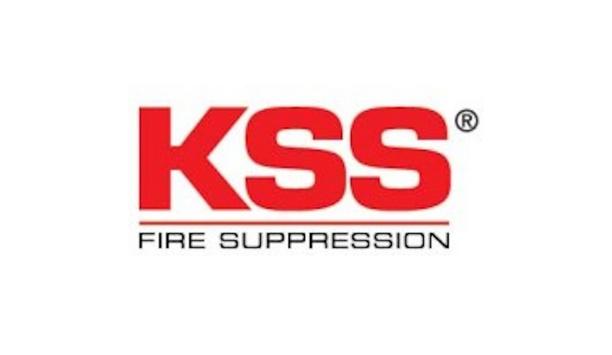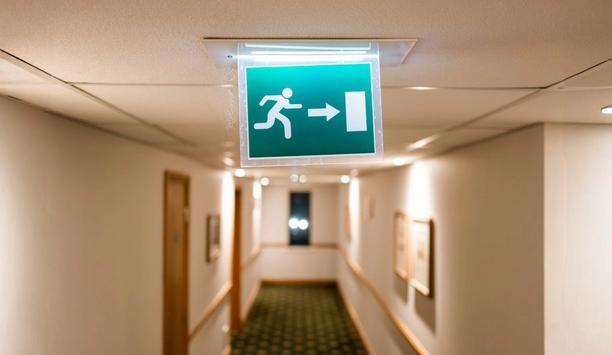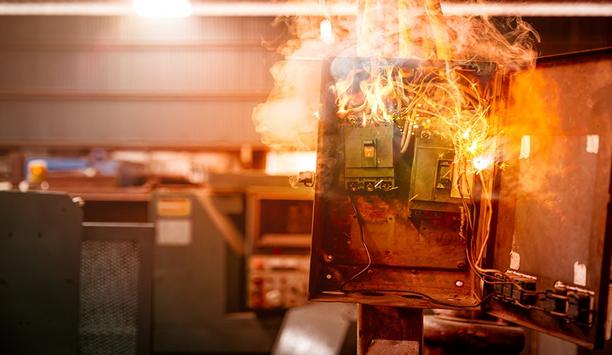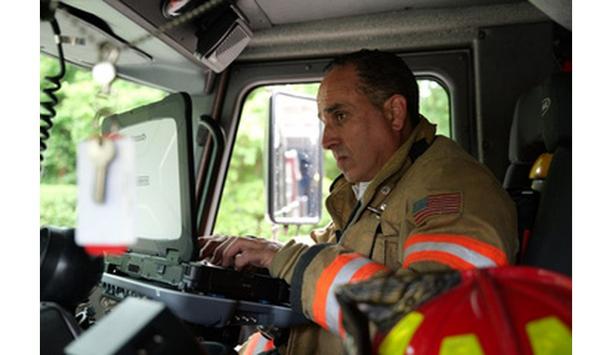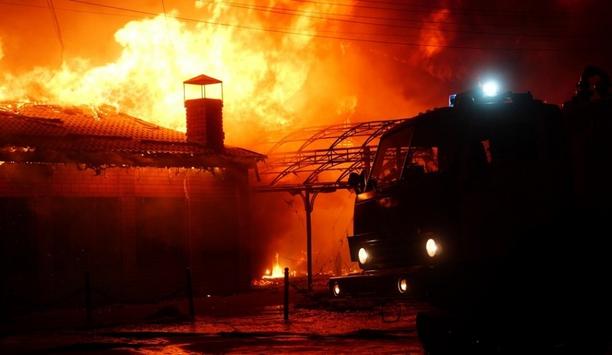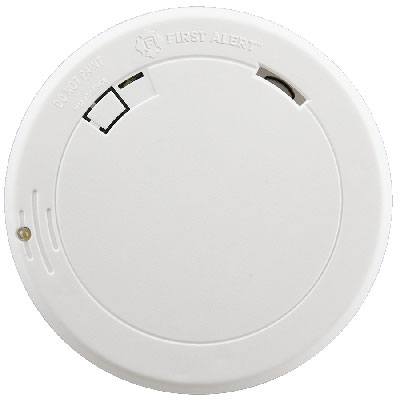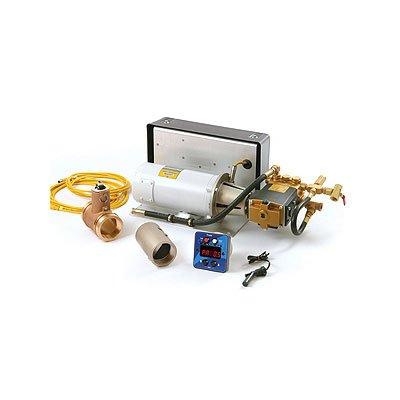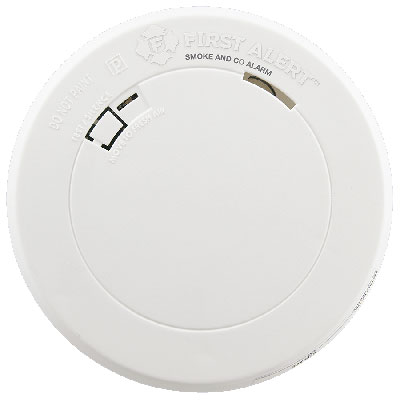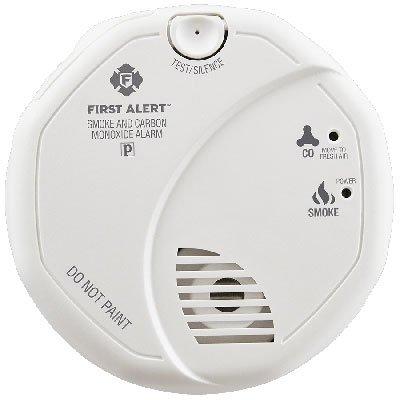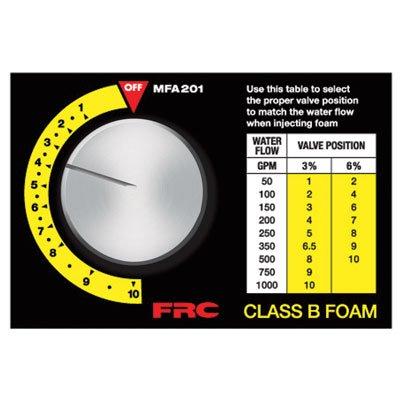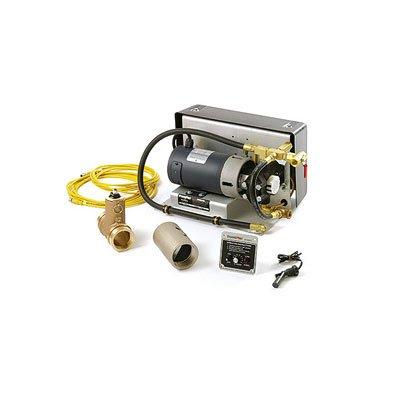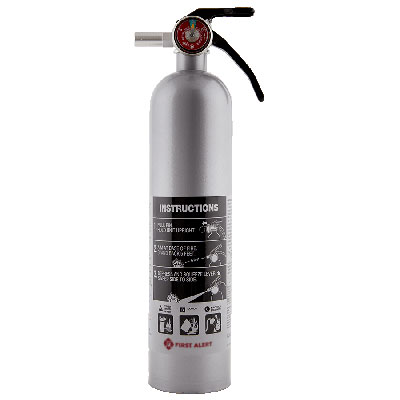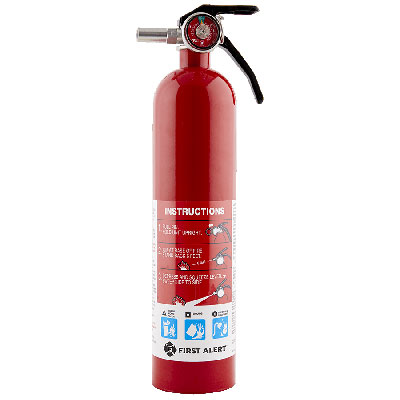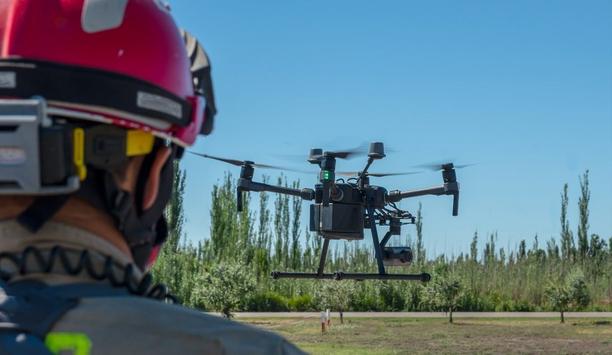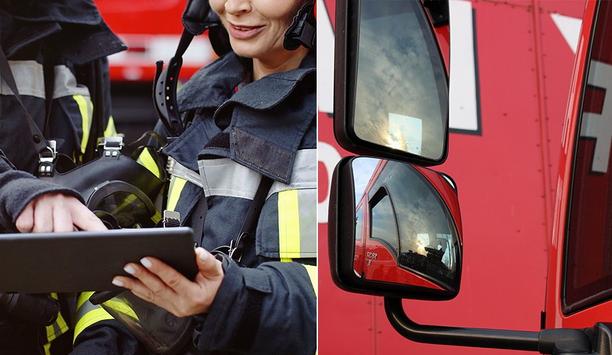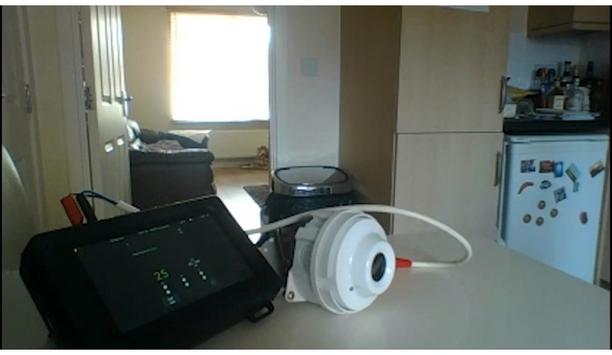Building Fire Safety
As a pioneer manufacturer of high-performance sealing systems for fire doors – they have shown unwavering support for Fire Door Safety Week since its inception in 2013. Kicking off on marks a momentous 10 year anniversary of the campaign. Fire Door Safety Week (FDSW) was launched in response to a legacy of fire door neglect. Know Fire Door Basics The campaign is managed by the British Woodworking Federation and is supported by a number of partners It's a ‘mass market’ aware...
As the fire safety industry continues to evolve, there are significant changes ahead that will impact how everyone approaches fire extinguisher firefighting foams. In particular, the increasing restrictions on per- and poly-fluoroalkyl substances (PFAS) in firefighting foams demand staying ahead of the curve. At FireRite, their commitment to customer satisfaction and support has always been at the heart of everything they do. They understand that navigating these complex regulatory changes can...
Lorient and ASSA ABLOY are excited to announce their debut at the UK’s fastest-growing fire safety exhibition, The Fire Safety Event 2025, taking place at the NEC, Birmingham, from 8th to 10th April 2025. Located at stand 4/G30, together they will exhibit a complete range of fire door hardware and sealing system solutions. Spanning an impressive 84SQM, the stand will highlight the critical role of door hardware and intumescent sealing systems in fire safety, showcasing how these component...
Hochiki Europe, a globally renowned provider of innovative fire detection and life safety solutions, is proud to announce that it has been named Fire Detection Company of the Year by Building and Facilities News. This prestigious award recognizes Hochiki Europe's commitment to excellence, innovation, and reliability in the fire safety industry. fire safety standards Building and Facilities News highlighted Hochiki Europe's extensive product portfolio Building and Facilities News highl...
Being caught in a fire mishap is scary to think about, but it’s an unfortunate truth that many firefighters have to fight with thousands of building fires every year. According to the Consumer Product Safety Commission, the risk of dying in homes without smoke alarms is twice as high, as it is in homes that have working smoke alarms. And, to escape a building fire, early warning is vital; and for this reason, every home or business needs a smoke alarm. A smoke alarm is one of the best yet...
VIKING Life’s factories and their global service stations are the heart of VIKING. Over the last decade, they have invested heavily in optimizing their production facilities within technology, innovation, safety and low energy consumption. In 2023, they have worked on a large number of local and global initiatives throughout their production facilities with the aim of promoting sustainable production methods. These initiatives include improved waste air treatment, further installat...
News
When building a house or purchasing a new one, people generally don’t think about installing of a fire sprinkler system. But it is one of the first things that should be prioritized by every building owner. Homes are built to withstand a lot of wear and tear, hence, equipped with air conditioning when it gets hot outside and protected for the rainy & cold weather. Similarly, every home should be installed with a fire sprinkler system to prevent any type of fire hazard. Importance of fire sprinkler system in a building For a homeowner, it is important to protect the property with fire sprinklers For a homeowner or a contractor for any residential projects, it is important to protect the property with fire sprinklers. Contact Vintex Fire for the best fire sprinkler system purchase and installation services. The company pride themselves with very good industry experience, helping residential property owners and contractors to install quality fire sprinkler systems that are easy to maintain, install, and the most useful tool in the firefighting arsenal. Advantages of installing fire sprinkler system Fire sprinklers respond at all times, therefore, fire control is rapid and without any human intervention. They are fitted with water flow ‘gong’ alarms and will alert occupants of any building from a developing fire. Property damage is reduced as the sprinkler system controls a fire rapidly. Occupants and firefighters face less danger if the fire is kept in check by a sprinkler system.
When it comes to preventing the spread of any fire, a fire extinguisher is the first line of defense, either at home or in the workplace. The use of fire extinguishers is easy, but at the same time, it’s crucial to learn the proper, effective, and safe way to extinguish a fire. There are still some common mistakes that people make when using fire extinguishers and those mistakes should be avoided in the event of an emergency. Not Pulling the Extinguisher Pin Removing the safety pin from the fire extinguisher is vital before using the fire extinguisher Even with proper training in using fire extinguishers, it is usual to forget to pull or remove the safety pin in a moment of urgency to fight any fire. In any case, a person is unaware that fire extinguishers contain this pin or puzzled to pull the pin that will render the extinguisher useless even in the event of an emergency. Therefore, removing the safety pin from the fire extinguisher is vital before using the fire extinguisher to put out the blaze. Standing Way Too Close to the Fire One of the most common mistakes people make about the blaze is standing at the wrong distance when tackling a fire. If they are too far away from fire hazards, and operating then its discharge will be far too weak, and the fire may not go out. Likewise, if standing too close to the fire, people could potentially burn themselves or even help spread the fire. They should avoid such mistakes! Therefore, maintaining the correct distance between the fire extinguisher and the fire is one of the most important things to remember. According to the Federal Emergency Management Agency (FEMA), it is recommended to maintain a distance of approximately 8 ft. away from the blaze or the flames. Not Reading the Instructions Many people walk by fire extinguishers every day without reading the instructions printed right on them, and this is the most common mistake that everyone should avoid. Reading the instructions in the event of a fire is not at all a good idea, as it will use up valuable time, but also allow the small fire to grow. Therefore, it is advisable to take the time out as soon as possible to read over the instructions on the fire extinguisher, so people know exactly how to use it when facing any fire tragedy. There are various types of fire extinguishers available to tackling certain types of fire - every fire extinguisher will have on it detailed instructions citing the exact steps and precautions needed to tackle a fire effectively and safely.
KSS Fire Suppression specializes in providing the Irish Hotel Market with Cost Effective Preventative Maintenance Programmes in line with the applicable Irish / European Standards. KSS will assess the site, systems & users' schedule & in conjunction with their onsite team they will develop a Preventative Maintenance Plan that works with users' operational requirements. Users operational requirements They offer Nationwide Service Contracts on the following systems: Ansul R102 Kitchen Fire Suppression Systems Kitchen Canopy and Duct Cleaning Gas Fire Suppression Systems Protecting Comms Rooms Comms Room Integrity Testing Dry Risers Testing Ground Hydrants Testing Sauna Hydramist Fire Suppression Systems Don’t hesitate to contact them to discuss their Hotel's Fire Safety Preventative Maintenance Plan.
The Honolulu Star-Advertiser. The 25-year-old firefighter killed in the Young Street fire Monday night has been identified as Jeffrey Fiala. Honolulu Fire Department Chief Kalani Hao said that Fiala, who had been with HFD for about a year and a half, and was dedicated member of the department who served with honor and courage. News conference at HFD “This tragedy has been truly heartbreaking for all of us,” Hao said at a news conference at HFD headquarters in Kakaako. He said Fiala was known for his enthusiasm and love for the job. “Everyone just loved to be around him,” Hao said, noting that he had a “short career but made a great impact.” Don’t miss out on what's happening! Stay in touch with top news, as it happens, conveniently in the email inbox. It’s Free! Email 28141 Sign Up By clicking to sign up, they agree to Star-Advertiser’s and Google’s and. This form is protected by reCAPTCHA. Honolulu Fire Department Hao said the other four firefighters who were quite injured in the fire were scheduled to be released Hao said the other four firefighters who were seriously injured in the fire were scheduled to be discharged now from the Queen’s Medical Center. He said their injuries appeared to be “minimal” and that he was more concerned for their emotional well-being following the tragedy. Mayor Rick Blangiardi issued a statement “mourning the tragic loss of one of our brave firefighters, who made the ultimate sacrifice while heroically serving our city last night. In the early hours of a dangerous fire in McCully, Jeff Fiala, just 25 years old, lost his life in the line of duty during a building collapse,” the mayor said. “A husband and dedicated public servant, he had been with the Honolulu Fire Department for a year and a half, bringing a sense of passion and commitment to protecting our residents.” Support and resources Blangiardi said his office will work closely with HFD to “provide the support and resources needed to honor his legacy and assist his family.” Previous coverage A 25-year-old Honolulu firefighter died and five people were seriously injured Monday night in a two-story building fire on Young Street that caused a partial roof collapse. Honolulu Fire Department Chief Kalani Hao said outside Straub Benioff Hospital in Honolulu that a firefighter who had been with the department for a year and a half had been “tragically killed … young man … very tragic.” Cause of the firefighter’s death Four other firefighters were hospitalized at the Queen’s Medical Center Four other firefighters were hospitalized at the Queen’s Medical Center, Hao said in a brief joint appearance with Mayor Rick Blangiardi. A sixth person, a civilian, was taken to a hospital in serious condition. “It’s a very difficult time for us,” at HFD, Hao said. He thanked the community for their prayers and concerns. Hao said the cause of the firefighter’s death is still under investigation. “We’re off to a tough start to this year,” Blangiardi said, referring to a December plane crash that killed two young pilots, the deadly New Year’s fireworks explosions, and Monday’s night’s fatal fire. First HFD units Of Honolulu’s first responders, Blangiardi said, “These men and women stand ready each and every day to put their lives on the line.” Firefighters responded to a 7:42 p.m. 911 call for a building fire at 1645 Young St. in the Pawaa-McCully area and the first HFD units arrived at 7:45 p.m. to find smoke but no flames coming from the two-story residential building, HFD officials said. HFD Capt. Jamie Song told KHON and Hawaii News Now that a “mayday” call was issued at 7:58 p.m. because two firefighters were declared missing inside the structure that had a partial roof collapse. Honolulu Emergency Medical Services The fire was declared extinguished at 11:31 p.m., according to HFD, which responded with 23 units Song said one of the firefighters was able to get out on his own, but the second firefighter was “extricated” from the first floor by other firefighters at 8:24 p.m. Besides the firefighter who died, a civilian and four firefighters were taken to the hospital in serious condition, according to Song. At 8:29 p.m., HFD called a third alarm, requiring more units and firefighters, and they had the fire under control at 9:07 p.m., according to HFD. The fire was declared extinguished at 11:31 p.m., according to HFD, which responded with 23 units and about 61 personnel. Police and Honolulu Emergency Medical Services personnel also responded. Police closed Young Street in both directions as emergency crews responded. Immediate emergency needs The Hawaii Red Cross officials said in a news release that volunteers responded to the 10-unit complex, “meeting with affected residents to ensure their immediate emergency needs are met.” They opened a shelter for displaced residents at the McCully District Park Gymnasium, 831 Pumehana St. The shelter is only for residents affected by the Young Street fire, according to the Honolulu Department of Emergency Management. “Volunteers will continue to follow up with anyone affected in the coming weeks to provide referrals, guidance, or additional assistance as needed to help with the recovery process,” Red Cross officials said. insightful discussion of ideas In a statement Tuesday, Gov. Josh Green said, “I am deeply heartbroken to learn of the tragic loss of one of our brave firefighters in the line of duty. This hero selflessly put their life on the line to protect others, embodying the very best of who we are as a community. Our hearts are with his family, loved ones and fellow firefighters who were injured during this profoundly difficult time.” 65 Comments By participating in online discussions, they acknowledge that they have agreed to the. An insightful discussion of ideas and viewpoints is encouraged, but comments must be civil and in good taste, with no personal attacks. If their comments are inappropriate, they may be banned from posting. Report comments if they believe they do not follow them. Having trouble with comments?.
The fire safety landscape has experienced significant change in recent years. Some high-profile incidents, including those in Catford and Dagenham, highlight the critical importance of using fire-resistant materials and implementing enhanced safety measures for both residential and commercial structures. These tragic incidents have prompted the construction industry to rethink how it designs and builds safe spaces for people to live and work in. In fact, the latest revision to the Fire Safety Standard (BS 9991) introduced several important changes to improve regulation. Among them, broadening the scope to include residential care homes, bringing fire door classifications up to European standards, and improved provisions for tall buildings when it comes to smoke control and evacuation lifts. Latest progress to improve fire safety A key aspect of the evolving Fire Safety Standard, and among the most critical, has been the widespread adoption of non-combustible materials in construction. The choice of materials has become a key focus in modern construction projects. In this article, the Copper Sustainability Partnership (CuSP) explores the latest progress to improve fire safety in buildings and how copper positions itself as the gold standard for the built environment. How are non-combustible materials used in construction? The 2024 revision to the regulation limits the restriction on combustible material use to external walls Non-combustible materials, by definition, do not burn or support the spread of fire. They, therefore, play a key role in reducing the risk of fire ignition and slowing its spread throughout a building, minimizing the potential for injury or loss of life and reducing the overall damage to the structure. The 2024 revision to the regulation limits the restriction on combustible material use to external walls, ancillary areas, and kitchens. However, a critical risk remains in the use of plastic piping for heating and plumbing, due to its combustibility and potential to release toxic fumes. To address this, regulation must evolve and recognize copper and other metals for their superior fire resistance, if a safer future is to be created for internal building systems. The fire consultation forum In response to growing concerns about fire risks, the Fire Sector Federation (FSF) recently launched its fire consultation forum, which aims to enhance communication, share knowledge, and foster collaboration among key stakeholders within the fire safety sector. This initiative brings together a diverse range of groups, including government departments, fire safety professionals, insurance bodies, and the construction industry to ensure a more coordinated approach to fire-related regulations. How fire safety information is shared? It mandates the registration of high-risk buildings and clarifies the roles of accountable persons The forum aims to ensure the implementation of the Building Safety Act 2022, a crucial piece of legislation aimed at improving safety, accountability, and compliance within the construction sector. It mandates the registration of high-risk buildings and clarifies the roles of accountable persons. By systematizing fire safety measures across the industry, the act strengthens long-term resilience and accountability, helping to create safer built environments. The goal is simple but vital: to create safer, more resilient buildings by improving how fire safety information is shared, and policies are developed. As part of this shift, the materials used in construction have come under greater scrutiny. Are modular homes fire-safe? With developers under pressure to meet government housebuilding targets, modern methods of construction, such as modular homes, offer a quick and efficient solution and have become popular in the industry. They are prefabricated off-site and then assembled on location, making them an attractive option for meeting urgent housing demand. However, their fire safety is just as important as their quick installation – especially with high-rise buildings. With modular homes on the rise, recent Research by Harlow Consulting and Edinburgh Napier University, published by the Ministry of Housing, has highlighted fire safety concerns with volumetric modular construction. Standard fire testing methodology There is no definitive evidence on whether fires are more likely in modular buildings The report notes the lack of a standard fire testing methodology for these buildings – while there is no definitive evidence on whether fires are more likely in modular buildings, the use of combustible materials in voids could lead to more severe consequences if fire and smoke spread quickly, unless mitigated by proper design and installation. It's essential to evaluate whether modular homes are equipped with fire-resistant features that can prevent the rapid spread of fire and protect residents in the event of an emergency. What is the part of plumbing in enhancing building fire safety? Particularly in high-rise buildings and residential complexes, fire-resistant materials like non-combustible cladding, piping, and insulation are critical in developing buildings that can withstand fire and contain it within a limited area. Among the most overlooked elements in fire safety are the systems used within buildings, such as plumbing. More recently, plastic pipes have become a common choice for plumbing – however, the flammability of plastic materials is a major cause for concern. Many plastics, including polyvinyl chloride, polyethylene, and multi-layer composite pipes burn quickly when exposed to fire and can release toxic fumes that fuel the blaze and pose risks to human health. These plastics not only catch fire quickly but melt and drip, exacerbating the spread of fire. This is where copper comes in as a vital material for improving fire safety. Fast and reliable evacuation Copper is a non-combustible material that can help prevent the spread of fire in critical areas Copper is a non-combustible material that can help prevent the spread of fire in critical areas like plumbing systems. The metal has a high melting point of 1,085°C - far exceeding the temperature of most building fires – and does not catch fire easily or release harmful gases when exposed to high heat. Additionally, copper pipes have a low thermal expansion coefficient, meaning they expand at a slower rate than most other building materials when exposed to heat. This makes copper particularly valuable in fire situations, as it retains its structural integrity for longer, helping to prevent further damage or catastrophic failure. The properties of copper make it a vital component of fire safety, particularly in modern buildings, where fast and reliable evacuation is key to saving lives. The future of modern construction As the construction industry faces increasing pressure to meet heightened fire safety standards, the adoption of non-combustible materials such as copper is essential. The importance of these materials cannot be overstated, especially in the context of modular homes. The future of fire safety lies in a holistic approach, one that incorporates regulatory compliance and establishment, with a deeper understanding of the materials and systems that go into creating safe buildings and homes. By replacing plastic pipes with copper in buildings, installers can significantly reduce the risk of fire spreading through the building’s infrastructure. As fire safety standards evolve, copper has the potential to revolutionize building safety. So, when will it become the standard for plumbing and infrastructure?
Being caught in a fire mishap is scary to think about, but it’s an unfortunate truth that many firefighters have to fight with thousands of building fires every year. According to the Consumer Product Safety Commission, the risk of dying in homes without smoke alarms is twice as high as it is in homes that have working smoke alarms. And, to escape a building fire, early warning is vital; and for this reason, every home or business needs a smoke alarm. A smoke alarm is one of the best yet most affordable ways to provide early warning, when a fire begins at a premise. A fire alarm or smoke detector is a portable device, which can help prevent injuries and minimize property damage, if it is installed and maintained properly. Types of Fire Alarms: Ionization alarm: Ionization alarms are best at detecting small particles released by fast, flaming fires that don’t emit much visible smoke. This kind of heat detector or fire detector contains a very small amount of radioactive material, which reacts to particles emitted in a fire and sets off the alarm. An ionization alarm is very sensitive as the smoke produced by any burnt food or by steam from the shower can trigger them; hence there are chances of more false alarms. Therefore, it is advisable not to place near the kitchen or bathroom. Photoelectric alarm: The photoelectric alarm is best at detecting a common type of house fire called smoky and blazing fire. This type of smoking detector or fire alarm contains a photocell and a light beam shining away from the cell, and as soon as smoke enters the test chamber, some of the light scatters by the smoke particles and hits the cell, triggering the alarm. And, it is advisable to be cleaned occasionally as dust or insects entering the unit can cause false alarms. Dual sensor alarm: It contains both an ionization smoke sensor and a photoelectric smoke sensor, and therefore, dual-sensor alarm is comprised of the best and worst features of both smoke detector types. A dual-sensor alarm is a good option to install in a building, but don’t install them near a kitchen or bathroom, as with any ionization alarm. Even some models of this type of smoke alarm require both fire sensors to be triggered before the alarm will go off, but this may delay the alert from sounding.
When building a house or purchasing a new one, people generally don’t think about installing of a fire sprinkler system. But it is one of the first things that should be prioritized by every building owner. Homes are built to withstand a lot of wear and tear, hence, equipped with air conditioning when it gets hot outside and protected for the rainy & cold weather. Similarly, every home should be installed with a fire sprinkler system to prevent any type of fire hazard. Importance of fire sprinkler system in a building For a homeowner, it is important to protect the property with fire sprinklers For a homeowner or a contractor for any residential projects, it is important to protect the property with fire sprinklers. Contact Vintex Fire for the best fire sprinkler system purchase and installation services. The company pride themselves with very good industry experience, helping residential property owners and contractors to install quality fire sprinkler systems that are easy to maintain, install, and the most useful tool in the firefighting arsenal. Advantages of installing fire sprinkler system Fire sprinklers respond at all times, therefore, fire control is rapid and without any human intervention. They are fitted with water flow ‘gong’ alarms and will alert occupants of any building from a developing fire. Property damage is reduced as the sprinkler system controls a fire rapidly. Occupants and firefighters face less danger if the fire is kept in check by a sprinkler system.
When it comes to preventing the spread of any fire, a fire extinguisher is the first line of defense, either at home or in the workplace. The use of fire extinguishers is easy, but at the same time, it’s crucial to learn the proper, effective, and safe way to extinguish a fire. There are still some common mistakes that people make when using fire extinguishers and those mistakes should be avoided in the event of an emergency. Not Pulling the Extinguisher Pin Removing the safety pin from the fire extinguisher is vital before using the fire extinguisher Even with proper training in using fire extinguishers, it is usual to forget to pull or remove the safety pin in a moment of urgency to fight any fire. In any case, a person is unaware that fire extinguishers contain this pin or puzzled to pull the pin that will render the extinguisher useless even in the event of an emergency. Therefore, removing the safety pin from the fire extinguisher is vital before using the fire extinguisher to put out the blaze. Standing Way Too Close to the Fire One of the most common mistakes people make about the blaze is standing at the wrong distance when tackling a fire. If they are too far away from fire hazards, and operating then its discharge will be far too weak, and the fire may not go out. Likewise, if standing too close to the fire, people could potentially burn themselves or even help spread the fire. They should avoid such mistakes! Therefore, maintaining the correct distance between the fire extinguisher and the fire is one of the most important things to remember. According to the Federal Emergency Management Agency (FEMA), it is recommended to maintain a distance of approximately 8 ft. away from the blaze or the flames. Not Reading the Instructions Many people walk by fire extinguishers every day without reading the instructions printed right on them, and this is the most common mistake that everyone should avoid. Reading the instructions in the event of a fire is not at all a good idea, as it will use up valuable time, but also allow the small fire to grow. Therefore, it is advisable to take the time out as soon as possible to read over the instructions on the fire extinguisher, so people know exactly how to use it when facing any fire tragedy. There are various types of fire extinguishers available to tackling certain types of fire - every fire extinguisher will have on it detailed instructions citing the exact steps and precautions needed to tackle a fire effectively and safely.
KSS Fire Suppression specializes in providing the Irish Hotel Market with Cost Effective Preventative Maintenance Programmes in line with the applicable Irish / European Standards. KSS will assess the site, systems & users' schedule & in conjunction with their onsite team they will develop a Preventative Maintenance Plan that works with users' operational requirements. Users operational requirements They offer Nationwide Service Contracts on the following systems: Ansul R102 Kitchen Fire Suppression Systems Kitchen Canopy and Duct Cleaning Gas Fire Suppression Systems Protecting Comms Rooms Comms Room Integrity Testing Dry Risers Testing Ground Hydrants Testing Sauna Hydramist Fire Suppression Systems Don’t hesitate to contact them to discuss their Hotel's Fire Safety Preventative Maintenance Plan.
The Honolulu Star-Advertiser. The 25-year-old firefighter killed in the Young Street fire Monday night has been identified as Jeffrey Fiala. Honolulu Fire Department Chief Kalani Hao said that Fiala, who had been with HFD for about a year and a half, and was dedicated member of the department who served with honor and courage. News conference at HFD “This tragedy has been truly heartbreaking for all of us,” Hao said at a news conference at HFD headquarters in Kakaako. He said Fiala was known for his enthusiasm and love for the job. “Everyone just loved to be around him,” Hao said, noting that he had a “short career but made a great impact.” Don’t miss out on what's happening! Stay in touch with top news, as it happens, conveniently in the email inbox. It’s Free! Email 28141 Sign Up By clicking to sign up, they agree to Star-Advertiser’s and Google’s and. This form is protected by reCAPTCHA. Honolulu Fire Department Hao said the other four firefighters who were quite injured in the fire were scheduled to be released Hao said the other four firefighters who were seriously injured in the fire were scheduled to be discharged now from the Queen’s Medical Center. He said their injuries appeared to be “minimal” and that he was more concerned for their emotional well-being following the tragedy. Mayor Rick Blangiardi issued a statement “mourning the tragic loss of one of our brave firefighters, who made the ultimate sacrifice while heroically serving our city last night. In the early hours of a dangerous fire in McCully, Jeff Fiala, just 25 years old, lost his life in the line of duty during a building collapse,” the mayor said. “A husband and dedicated public servant, he had been with the Honolulu Fire Department for a year and a half, bringing a sense of passion and commitment to protecting our residents.” Support and resources Blangiardi said his office will work closely with HFD to “provide the support and resources needed to honor his legacy and assist his family.” Previous coverage A 25-year-old Honolulu firefighter died and five people were seriously injured Monday night in a two-story building fire on Young Street that caused a partial roof collapse. Honolulu Fire Department Chief Kalani Hao said outside Straub Benioff Hospital in Honolulu that a firefighter who had been with the department for a year and a half had been “tragically killed … young man … very tragic.” Cause of the firefighter’s death Four other firefighters were hospitalized at the Queen’s Medical Center Four other firefighters were hospitalized at the Queen’s Medical Center, Hao said in a brief joint appearance with Mayor Rick Blangiardi. A sixth person, a civilian, was taken to a hospital in serious condition. “It’s a very difficult time for us,” at HFD, Hao said. He thanked the community for their prayers and concerns. Hao said the cause of the firefighter’s death is still under investigation. “We’re off to a tough start to this year,” Blangiardi said, referring to a December plane crash that killed two young pilots, the deadly New Year’s fireworks explosions, and Monday’s night’s fatal fire. First HFD units Of Honolulu’s first responders, Blangiardi said, “These men and women stand ready each and every day to put their lives on the line.” Firefighters responded to a 7:42 p.m. 911 call for a building fire at 1645 Young St. in the Pawaa-McCully area and the first HFD units arrived at 7:45 p.m. to find smoke but no flames coming from the two-story residential building, HFD officials said. HFD Capt. Jamie Song told KHON and Hawaii News Now that a “mayday” call was issued at 7:58 p.m. because two firefighters were declared missing inside the structure that had a partial roof collapse. Honolulu Emergency Medical Services The fire was declared extinguished at 11:31 p.m., according to HFD, which responded with 23 units Song said one of the firefighters was able to get out on his own, but the second firefighter was “extricated” from the first floor by other firefighters at 8:24 p.m. Besides the firefighter who died, a civilian and four firefighters were taken to the hospital in serious condition, according to Song. At 8:29 p.m., HFD called a third alarm, requiring more units and firefighters, and they had the fire under control at 9:07 p.m., according to HFD. The fire was declared extinguished at 11:31 p.m., according to HFD, which responded with 23 units and about 61 personnel. Police and Honolulu Emergency Medical Services personnel also responded. Police closed Young Street in both directions as emergency crews responded. Immediate emergency needs The Hawaii Red Cross officials said in a news release that volunteers responded to the 10-unit complex, “meeting with affected residents to ensure their immediate emergency needs are met.” They opened a shelter for displaced residents at the McCully District Park Gymnasium, 831 Pumehana St. The shelter is only for residents affected by the Young Street fire, according to the Honolulu Department of Emergency Management. “Volunteers will continue to follow up with anyone affected in the coming weeks to provide referrals, guidance, or additional assistance as needed to help with the recovery process,” Red Cross officials said. insightful discussion of ideas In a statement Tuesday, Gov. Josh Green said, “I am deeply heartbroken to learn of the tragic loss of one of our brave firefighters in the line of duty. This hero selflessly put their life on the line to protect others, embodying the very best of who we are as a community. Our hearts are with his family, loved ones and fellow firefighters who were injured during this profoundly difficult time.” 65 Comments By participating in online discussions, they acknowledge that they have agreed to the. An insightful discussion of ideas and viewpoints is encouraged, but comments must be civil and in good taste, with no personal attacks. If their comments are inappropriate, they may be banned from posting. Report comments if they believe they do not follow them. Having trouble with comments?.
The fire safety landscape has experienced significant change in recent years. Some high-profile incidents, including those in Catford and Dagenham, highlight the critical importance of using fire-resistant materials and implementing enhanced safety measures for both residential and commercial structures. These tragic incidents have prompted the construction industry to rethink how it designs and builds safe spaces for people to live and work in. In fact, the latest revision to the Fire Safety Standard (BS 9991) introduced several important changes to improve regulation. Among them, broadening the scope to include residential care homes, bringing fire door classifications up to European standards, and improved provisions for tall buildings when it comes to smoke control and evacuation lifts. Latest progress to improve fire safety A key aspect of the evolving Fire Safety Standard, and among the most critical, has been the widespread adoption of non-combustible materials in construction. The choice of materials has become a key focus in modern construction projects. In this article, the Copper Sustainability Partnership (CuSP) explores the latest progress to improve fire safety in buildings and how copper positions itself as the gold standard for the built environment. How are non-combustible materials used in construction? The 2024 revision to the regulation limits the restriction on combustible material use to external walls Non-combustible materials, by definition, do not burn or support the spread of fire. They, therefore, play a key role in reducing the risk of fire ignition and slowing its spread throughout a building, minimizing the potential for injury or loss of life and reducing the overall damage to the structure. The 2024 revision to the regulation limits the restriction on combustible material use to external walls, ancillary areas, and kitchens. However, a critical risk remains in the use of plastic piping for heating and plumbing, due to its combustibility and potential to release toxic fumes. To address this, regulation must evolve and recognize copper and other metals for their superior fire resistance, if a safer future is to be created for internal building systems. The fire consultation forum In response to growing concerns about fire risks, the Fire Sector Federation (FSF) recently launched its fire consultation forum, which aims to enhance communication, share knowledge, and foster collaboration among key stakeholders within the fire safety sector. This initiative brings together a diverse range of groups, including government departments, fire safety professionals, insurance bodies, and the construction industry to ensure a more coordinated approach to fire-related regulations. How fire safety information is shared? It mandates the registration of high-risk buildings and clarifies the roles of accountable persons The forum aims to ensure the implementation of the Building Safety Act 2022, a crucial piece of legislation aimed at improving safety, accountability, and compliance within the construction sector. It mandates the registration of high-risk buildings and clarifies the roles of accountable persons. By systematizing fire safety measures across the industry, the act strengthens long-term resilience and accountability, helping to create safer built environments. The goal is simple but vital: to create safer, more resilient buildings by improving how fire safety information is shared, and policies are developed. As part of this shift, the materials used in construction have come under greater scrutiny. Are modular homes fire-safe? With developers under pressure to meet government housebuilding targets, modern methods of construction, such as modular homes, offer a quick and efficient solution and have become popular in the industry. They are prefabricated off-site and then assembled on location, making them an attractive option for meeting urgent housing demand. However, their fire safety is just as important as their quick installation – especially with high-rise buildings. With modular homes on the rise, recent Research by Harlow Consulting and Edinburgh Napier University, published by the Ministry of Housing, has highlighted fire safety concerns with volumetric modular construction. Standard fire testing methodology There is no definitive evidence on whether fires are more likely in modular buildings The report notes the lack of a standard fire testing methodology for these buildings – while there is no definitive evidence on whether fires are more likely in modular buildings, the use of combustible materials in voids could lead to more severe consequences if fire and smoke spread quickly, unless mitigated by proper design and installation. It's essential to evaluate whether modular homes are equipped with fire-resistant features that can prevent the rapid spread of fire and protect residents in the event of an emergency. What is the part of plumbing in enhancing building fire safety? Particularly in high-rise buildings and residential complexes, fire-resistant materials like non-combustible cladding, piping, and insulation are critical in developing buildings that can withstand fire and contain it within a limited area. Among the most overlooked elements in fire safety are the systems used within buildings, such as plumbing. More recently, plastic pipes have become a common choice for plumbing – however, the flammability of plastic materials is a major cause for concern. Many plastics, including polyvinyl chloride, polyethylene, and multi-layer composite pipes burn quickly when exposed to fire and can release toxic fumes that fuel the blaze and pose risks to human health. These plastics not only catch fire quickly but melt and drip, exacerbating the spread of fire. This is where copper comes in as a vital material for improving fire safety. Fast and reliable evacuation Copper is a non-combustible material that can help prevent the spread of fire in critical areas Copper is a non-combustible material that can help prevent the spread of fire in critical areas like plumbing systems. The metal has a high melting point of 1,085°C - far exceeding the temperature of most building fires – and does not catch fire easily or release harmful gases when exposed to high heat. Additionally, copper pipes have a low thermal expansion coefficient, meaning they expand at a slower rate than most other building materials when exposed to heat. This makes copper particularly valuable in fire situations, as it retains its structural integrity for longer, helping to prevent further damage or catastrophic failure. The properties of copper make it a vital component of fire safety, particularly in modern buildings, where fast and reliable evacuation is key to saving lives. The future of modern construction As the construction industry faces increasing pressure to meet heightened fire safety standards, the adoption of non-combustible materials such as copper is essential. The importance of these materials cannot be overstated, especially in the context of modular homes. The future of fire safety lies in a holistic approach, one that incorporates regulatory compliance and establishment, with a deeper understanding of the materials and systems that go into creating safe buildings and homes. By replacing plastic pipes with copper in buildings, installers can significantly reduce the risk of fire spreading through the building’s infrastructure. As fire safety standards evolve, copper has the potential to revolutionize building safety. So, when will it become the standard for plumbing and infrastructure?
Being caught in a fire mishap is scary to think about, but it’s an unfortunate truth that many firefighters have to fight with thousands of building fires every year. According to the Consumer Product Safety Commission, the risk of dying in homes without smoke alarms is twice as high as it is in homes that have working smoke alarms. And, to escape a building fire, early warning is vital; and for this reason, every home or business needs a smoke alarm. A smoke alarm is one of the best yet most affordable ways to provide early warning, when a fire begins at a premise. A fire alarm or smoke detector is a portable device, which can help prevent injuries and minimize property damage, if it is installed and maintained properly. Types of Fire Alarms: Ionization alarm: Ionization alarms are best at detecting small particles released by fast, flaming fires that don’t emit much visible smoke. This kind of heat detector or fire detector contains a very small amount of radioactive material, which reacts to particles emitted in a fire and sets off the alarm. An ionization alarm is very sensitive as the smoke produced by any burnt food or by steam from the shower can trigger them; hence there are chances of more false alarms. Therefore, it is advisable not to place near the kitchen or bathroom. Photoelectric alarm: The photoelectric alarm is best at detecting a common type of house fire called smoky and blazing fire. This type of smoking detector or fire alarm contains a photocell and a light beam shining away from the cell, and as soon as smoke enters the test chamber, some of the light scatters by the smoke particles and hits the cell, triggering the alarm. And, it is advisable to be cleaned occasionally as dust or insects entering the unit can cause false alarms. Dual sensor alarm: It contains both an ionization smoke sensor and a photoelectric smoke sensor, and therefore, dual-sensor alarm is comprised of the best and worst features of both smoke detector types. A dual-sensor alarm is a good option to install in a building, but don’t install them near a kitchen or bathroom, as with any ionization alarm. Even some models of this type of smoke alarm require both fire sensors to be triggered before the alarm will go off, but this may delay the alert from sounding.


Expert Commentary
Are people too passive when it comes to fire door safety? Research conducted by the British Woodworking Federation (BWF) in 2022 would suggest so, with a third of the British public stating they would not report a problem with a fire door, despite three-quarters of respondents believing a propped open fire door would not perform its role in the event of a fire. From schools and shops to shared areas of employment and accommodation, people are habitually - and sometimes unknowingly - kept safe by passive fire protection systems such as fire doors and their hardware. Yet, in the same breath, occupants and visitors of busy public-facing buildings can be placed in danger by neglected or inappropriately used products. Highlighting these dangers, the Fire Door Inspection Scheme found 75% of inspected fire doors in the UK failed to meet required safety standards in 2021, for example. Importance of fire extinguishers Fast forward to the present day and perceptions are being challenged. Following a period of regulatory updates, greater focus is being placed on the responsibilities associated with both active and passive fire protection, and with a 79% rise in prosecutions related to fire safety violations between April 2023 and March 2024, it certainly pays to pay more attention. Where most recognize the importance of fire extinguishers and smoke detectors, what more can be done to ensure fire doors and their hardware are held in the same regard? Occupants and visitors of busy public-facing buildings can be placed in danger. Regulated and relied upon Passive fire protection is identified as the group of structural measures designed to inhibit the spread of smoke and fire. Frequently hidden in plain sight and sometimes taken for granted, fire doors are a key element of any building’s passive fire safety system and should never fall under neglect. In fact, fire doors are often the first line of defence against fire and smoke, and when closed, will compartmentalize spaces to protect property and provide occupants with an opportunity to escape. Fire doors are a key element of any building’s passive fire safety system. Such is their importance to public safety; fire doors are acknowledged by several professional bodies and are listed as a legal requirement in all non-domestic premises and houses in multiple occupations (HMOs). Under the recently updated Regulatory Reform (Fire Safety) Order 2005, a building’s designated Responsible Person (RP) must perform regular duties to review the condition of fire door systems, while providing residents with access to comprehensive fire safety information in the process. Fire door hardware Functional fire doors and clear exit routes are critical in ensuring appropriate precautions and preventative measures are in place and as such, responsible persons must recognize that a building’s fire doors will not perform as intended unless essential hardware has been correctly specified, installed, and maintained. As correctly acknowledged by most of the British public, an open fire door is rendered useless in the event of a fire and to form an effective barrier against fire and smoke, fire doors must be capable of closing fully from an open position. When performing a closing action, a fire door will call upon its hinges, locks, latches and door-closing devices, and in the event of a fire, not one of these elements can fail. In view of this, fire door hardware is methodically designed and tested to support the integrity of fire doors. To meet necessary standards, a fire doorset must pass one or more of a series of standardized tests, confirming its UKCA and CE certifications and FD ratings. Users can identify a certified fire door by its label, usually found on the top edge of the door. Functional fire doors and clear exit routes are critical in ensuring appropriate precautions. Shared responsibilities and results As part of their research in 2022, the BWF found that almost half of those who neglect to report a problem with fire doors would not take action because they were unsure who to report it to, or cited it was simply not their place or role to report it. Seemingly then, in many cases, improved communication and education towards fire door safety can help mitigate risk and further raise standards across the built environment. In any circumstance, people must continue being urged to keep buildings safe by reporting damaged or propped open fire doors to designated responsible persons. In higher-risk buildings where many rely on the same fire safety systems for example, it’s imperative that people know who they can turn to when a fire door safety issue arises, and often, this will be the landlord, owner, manager, or occupier of the premises. Equally, responsible persons must also adopt a hands-on approach by ensuring fire doors and their hardware are ‘subject to a suitable system of maintenance and are maintained in an efficient state, in efficient working order and in good repair’, as per the Regulatory Reform (Fire Safety) Order 2005. Higher-risk buildings where many rely on the same fire safety systems. True purpose of fire doors Where a fire alarm will inform you when something is wrong, fire doors require more proactive methods. As part of their ongoing maintenance duties, responsible persons should perform quarterly checks on fire doors, assessing the certification, gaps, seals, hinges and closing elements. Even durable door hardware can become worn and tired in high-footfall environments and may need repairing or replacing over time. An incorrectly installed or damaged self-closing device, for example, can limit the closing action of a fire door and prevent it from fully closing into the frame. Upon inspection, if a fire door isn’t operating as intended, it’s imperative to seek out professional advice and ensure maintenance or replacement is carried out quickly and professionally. Whilst many of us use them day to day without thought, the true purpose of fire doors must remain clear at all times. Collectively, we must continue to change the perceptions associated with passive fire protection methods and fire door safety, and only when we improve collaboration and communication will we truly limit the devastation of fire. Simply put, there is a chain of responsible parties, and everyone must recognize what their role is - we all must do better. Fire doors require more proactive methods. How Allegion UK can help Allegion UK has a wealth of resources designed to help responsible persons, duty holders and professionals undertake product selection, installation and maintenance checks on fire doors and hardware. For accessible fire door hardware support, Allegion’s new ‘Fire Door Hardware Fundamentals’ guide is available for download and combines expert guidance with helpful terminology and useful fire door safety checklists.
Using technology to provide the information required under the new Building Safety Act 2022, which has been enforceable since October 1st, can help relieve the pressure on suppliers who are responsible for submitting the data, says Bob Glendenning, Fire Design Engineering Manager of Sherwin-Williams Protective & Marine Coatings. Building Safety Act The Building Safety Act is designed to take forward a fundamental reform of the building safety system and address the issues identified by Dame Judith Hackitt in her independent review, Building a Safer Future. The Government stated that the Act would deliver ‘the biggest changes to building safety for nearly 40 years and make residents safer in their homes" and named the Health and Safety Executive (HSE) as the new Building Safety Regulator to oversee the safety and standards of all buildings. The golden thread of information Different parts of the engineering community and the supply chain also need to understand Gateways In doing so, the legislation has also brought challenges for those in the complex supply chain who are required to provide specific information at each key stage which should be digitally stored and available for the lifetime of the building, described as The Golden Thread of information. For the protection of structural steel with intumescent coatings, the different parts of the engineering community and the supply chain also need to understand more detail about certain stages or Gateways as they are described under the terms of the act. Gateway requirements Structural engineers, designers, and specifiers will be more concerned with the requirements under Gateway One covering the planning stage and parts of Gateway Two dealing with building control approval. Applicators will need to understand parts of gateway two building control and gateway three covering safety information. Fabricators will need to understand the wider picture across all three gateways. Overhaul of existing regulations New guidance on how higher-risk buildings should be designed, constructed, and managed The intention is to ensure that the right people have the right information at the right time to ensure buildings are safe and building safety risks are managed throughout the building’s lifecycle. For the construction industry, and related specialisms such as Passive Fire Protection, this means an overhaul in existing regulations, with new guidance on how higher-risk buildings should be designed, constructed, and managed to ensure that those who use them are safe and feel safe. These buildings are defined as being a minimum of 18 meters or seven stories in height and comprise at least two domestic premises. Use of technology The resource is limited in many organizations, so how are suppliers to approach these challenging requirements without cutting corners? At Sherwin-Williams, we use our years of expertise along with the appropriate technology. This technology allows us to understand what is required at the start of the process working in collaboration with our customers. BIM process and tech They also provide important information and documentation required under the new act in the digital format To this end, we have invested in Building Information Modelling (BIM) processes and technology for many years and also partner with leading global software developers including Trimble. Such systems allow for data transfer and make storage much simpler. They are future-proofed and permanent. They also provide important information and documentation required under the new act in the digital format required. Benefits of the BIM model Benefits to the process are apparent for main contractors, architects, structural engineers, steel fabricators, and site inspectors. Accessing a BIM model collaboratively aids efficiency and versatility, particularly on projects with global players, where project team members may reside in different geographies around the world. All can access the model over the internet and collaborate using cloud-sharing technology. FDE 2.0 The software offers calculated solutions for the safe protection of structural steelwork framing elements We have been committed to this approach for some years and, to this end, we have developed our proprietary software called the FIRETEX Design Estimator 2.0 (FDE). The software offers calculated solutions for the safe protection of structural steelwork framing elements and embraces BIM with an integrated plugin tool allowing 3D modeling data to be directly linked into the software. Managing the whole process This offers the capability of providing calculations for coatings thicknesses of all shapes and sizes of steel sections, fire engineering, and in the case of cellular beams, allows for any configuration of web apertures to be seamlessly incorporated and the fire protection specification passed back into the model. For the steelwork fabricator, the approach with BIM means they can manage the whole process from concept to design through to delivery of materials on site including the off-site applied fire protection. On-site applied fire protection FIRETEX embodied carbon values, using our third-party certificated EPDs, are also stored within the 3D model The same principle could also be adapted for use with on-site applied fire protection, offering advantages to the main contractor and eventually to the owner-operator. FIRETEX embodied carbon values, using our third-party certificated EPDs, are also stored within the 3D model. Once the fire protection properties have been passed back into the BIM model, future interested stakeholders can access any of that information to manage many areas such as inspection and onward building fire maintenance. Even fire and rescue services could create strategies using this data. Time, cost, and efficiency saving There are real savings in efficiencies, time, and cost here, with the added benefits for the users in the longer term. One example of these efficiencies can be seen in the huge time savings in a recent project where all the floor plates were unique. That in turn made all the floor beams - which were cellular - unique designs in themselves so this was a huge design undertaking. Push-pull system We added missing dry film thickness design properties to the steelwork 3D model using the FDE The BIM workflow is a ‘push-pull’ system. We added missing dry film thickness design properties to the steelwork 3D model using the FDE. All of the coating properties were then stored on every piece in the model, including the EPD values, meaning we had access to this information to share with other parties for the lifetime of the building. Fast and accurate The newest development released very recently includes the ability to synchronize any optimized steel profiles back into the model. After synchronization, the end-user can then produce documents, drawings, labels, barcodes, and any other relevant documentation. This is fast and accurate and provides certainty for the new Building Safety Act. New powers of enforcement Potential offenses include knowingly or recklessly providing false or misleading information to the BSR This information is critical and the technology enables us to be accurate from the outset for our customers in the interests of safety. As a reminder as to why this information is so valuable, the BSR has new powers of enforcement in place and many officers are at work conducting investigations where they become aware of potential breaches of the legislation. Potential offenses include knowingly or recklessly providing false or misleading information to the BSR; allowing occupation of a higher-risk building without a completion certificate; failure to register an occupied higher-risk building and failure to apply for a building assessment certificate without ‘reasonable excuse.’ FDE Hub At Sherwin-Williams, we are building a hub of information for the longer term around our software capabilities - the FDE Hub. This is in the development stages and will be an area of the website where customers will be able to share project data to help supply the information for the new legislation and any other reason. We believe this new reform of fire safety legislation is for the right reasons. We need to embrace it, including the optimum use of technology as an industry, and make it work for all good reasons.
With new fire safety regulations around the corner and a renewed focus on responsible persons and coordination, Karen Trigg of Allegion UK discusses the significance of fire door hardware and why regular inspections and maintenance periods must remain high on the agenda. Fire doors and their hardware are often the first line of defense in the event of a fire. Working in tandem, they coexist as a core element of a building’s passive fire protection system, providing valuable protection and time for occupants to escape by compartmentalizing the spread of smoke and fire in an emergency. Fire door’s lifecycle In the UK alone, approximately three million fire doors are purchased and installed each year. Such is their significance to fire safety, each component requires detailed engineering, third-party testing and critically, periods of ongoing inspection and maintenance. While each stage of a fire door’s lifecycle is strictly regulated, fire door checks and maintenance falls under the remit of a building’s designated responsible person and is widely understood to be an area that has fallen under neglect. Fire Safety Regulations 2022 Fire doors and their hardware play an invaluable role in the safety of our built environment As such, in January 2023, The Fire Safety (England) Regulations 2022, under Regulation 10, made it a legal requirement for all responsible persons of multi-occupied residential buildings to conduct regular fire door checks within their premises. And while it’s said that overall inspection levels are rising, with 68% of responsible persons now conducting fire door checks (or having them inspected by professionals) every month or every quarter, there’s still work to be done says Karen Trigg of Allegion UK: “In the 12-month period ending March 2023, fire and rescue services attended 178,737 fire incidents in England, a 17% increase compared with the previous 12 months. And when you consider the portion of fire door sets that remain overlooked, the numbers don’t make for good reading. Fire doors and their hardware play an invaluable role in the safety of our built environment, but there are considerable differences between a fire door that’s operating as intended and one that hasn’t been correctly specified, installed, and maintained." Regulatory Reform Order 2005 Even durable fire door hardware can become worn and tired in a high-footfall environment" Karen Trigg added: “When it comes to maintenance specifically, Article 17 of the Regulatory Reform (Fire Safety) Order 2005, states that responsible persons must ensure fire doors and their hardware are ‘subject to a suitable system of maintenance and are maintained in an efficient state, in efficient working order and in good repair’." "Even durable fire door hardware can become worn and tired in a high-footfall environment and may need repairing or replacing over time. A damaged or ineffective self-closing device, for example, can limit the closing action of a fire door and prevent it from fully closing into the frame - rendering it useless in the event of a fire." risk assessment duties Karen Trigg added: “Although we’ve seen real development towards fire safety education in recent years, we must continue to drive forward the number of responsible persons conducting organized fire door checks and maintenance periods as part of their risk assessment duties." "The introduction of updated guidance on 1st October 2023 aims to do this further, by improving the cooperation and coordination between responsible persons and rising the requirements associated with recording and sharing fire safety information during fire risk assessments. The update will also make it easier for enforcement authorities to act against non-compliance.” A stitch in time saves lives As fire safety processes tighten, building owners and facility managers shouldn’t feel discouraged in their actions. In fact, responsible persons are reminded that there’s no need to overcomplicate fire door inspections. A simple visual assessment, conducted and recorded by a competent individual, could make the difference between compliance and a fire safety disaster. Responsible persons are reminded that there’s no need to overcomplicate fire door inspections Karen Trigg continues: “For responsible persons conducting checks, the first step of fire door safety is recognizing each component of a fire door and the potential faults to look for when evaluating its condition. The British Woodworking Federation Group - in support of Fire Door Safety Week - shares regular and reliable advice on fire door safety; including a practical five-step checklist that has been designed to support responsible persons during fire door assessments. The checklist works as a visual guide and covers the five key areas of a fire door - informing users on what to look out for, including: Certification: “A label or similar marking can often be found towards the top or side of the door and will confirm the fire door is genuine and certified. All ironmongery components, including locks, latches, closers and hinges must also be UKCA/CE marked and compatible with the door leaf’s certification.” Apertures: “More often than not, fire doors are tested as solid doors and without any glazing panels or air transfer grilles. It’s important to ensure there are no apertures, holes or breaks in the surface of the door or frame. Decision makers are also reminded that altering the door will make certification void.” Gaps and seals: “Gaps around the fire door should be no greater than 3 mm, and this must remain consistent around the whole frame. Intumescent strips must also be fitted at the top and sides of the door and show no signs of wear as this may negate the door’s ability to compartmentalize smoke and fire. Additionally, check for CE or BS EN 1935 marked hinges, which must be firmly fixed and without missing screws.” Door closers: “When it comes to door closers, it’s vital to check that your door hardware is fully functioning and will close the door onto the latch from any standing position. The door must fully engage with the frame from any opening angle, and it’s recommended that users check this by letting go of the door from 75 mm through to the closed position. It’s also important to review any hold-open devices to ensure they aren’t working against the door’s self-closing devices, as fire doors must not be wedged open in any scenario.” Operation: “Testing the operation of the full door assembly is essential - from handles and closers to hinges and seals. If the door is not operating effectively, is closing incorrectly on any of its sides, or there is any doubt about hardware certification and reliability, responsible persons must identify the problem before arranging and managing professional maintenance as soon as possible. Because when it comes to fire safety, there’s simply no time to stand still.” How Allegion UK can Help Allegion UK has a wealth of resources to help professionals undertake product selection, installation, and maintenance checks on fire doors and hardware. For post-installation and maintenance support, Allegion’s simple toolkit provides information and tips on detecting potential faulty doors and poor installation, a guide to the EN classification system and a safety checklist. There’s also an option to order a free door gap tester or download Allegion’s general guide to service and maintenance for free.
Editor's Dispatch
Fire departments responded to an estimated average of 32,160 home fires involving electrical distribution and lighting equipment each year in 2015–2019, according to the National Fire Protection Association (NFPA). Electrical fires cause scores of civilian deaths and hundreds of civilian injuries, as well as millions of dollars in property damage. Some of the electrical components that present fire hazards in the home include faulty electrical outlets and switches, worn or damaged components, overloaded circuits, damaged or frayed cords, and misused extension cords and power strips. Improper use of light fixtures can also be a danger, and space heaters can be a fire hazard, if they are placed too close to flammable materials or left unattended. Loose plugs can lead to overheating Plugging too many devices into a single outlet or using wing cords instead of proper wiring can overload a circuit As outlets and switches age, the wiring behind them can loosen and break, causing sparks and fire. Loose plugs can also overheat and ignite surrounding materials. Plugging too many appliances into a single outlet or using extension cords instead of proper wiring can overload a circuit, thus causing overheating and fires. Damaged or frayed cords can cause sparks and ignite nearby flammable materials. Cords that are kinked, pinched, or have exposed wires should be avoided and replaced immediately. Minimizing the Risk of Electrical Fires Here are some steps a homeowner can take to minimize the risk of fire from electrical systems: Upgrade the electrical system, especially if the home is older. If the electrical system has not been updated in a while, a qualified electrician can advise if it needs modernization. This could involve upgrading to breakers with better safety features such as Arc-Fault Circuit Interrupter (AFCI) and Ground Fault Circuit Interrupter (GFCI) technology. Schedule an electrical safety inspection. Having a qualified electrician periodically inspect a home's electrical system can identify potential problems before they escalate into fire hazards. Keep flammable materials away from electrical components, including curtains, furniture, and piles of paper. Sparks and overheating can easily ignite nearby flammables. Special Risks to Firefighters Firefighters face a unique set of electrical risks due to the nature of the situations they respond to. Here are some of the biggest electrical dangers that firefighters encounter: Live wires. Firefighters navigate burning buildings with compromised electrical systems. Exposed, downed, or malfunctioning wires pose a serious electrocution threat. Water can conduct electricity, so firefighters need to be especially careful when directing water streams near electrical sources. Hidden dangers. Fires can cause extensive damage, obscuring electrical hazards like damaged outlets, hidden energized wires, or electrical panels that may be malfunctioning. Firefighters need to be aware that not all electrical dangers are readily apparent. Using the wrong tools. Firefighters should know which type of extinguisher to use (like dry chemical powder or CO2) to smother the flames without risk of shock. High voltage situations. In some fire scenarios, like downed power lines or transformer fires, high-voltage electricity is a significant risk. Firefighters may need to call for utility companies to shut off power before fully engaging in firefighting efforts. Limited visibility. Smoke and darkness can significantly reduce visibility, making it even harder to spot electrical hazards during a fire. Firefighters rely on proper training and specialized equipment to navigate these situations safely. Improper grounding. Damaged or faulty grounding systems can create a situation where metal objects become electrified. Firefighters should be aware of this risk and take precautions. Electrical arcing. Electrical arcing is the creation of sparks or flashes of light when electricity jumps a gap between conductors. This can ignite nearby flammable materials and pose a risk to firefighters. Lack of ventilation. Electrical fires often produce toxic fumes. Firefighters should know how to properly ventilate the area to clear smoke and protect occupants from breathing in harmful substances. Addressing Multiple Threats Electrical fires present a double threat – fire and electrical shock. Firefighters must be trained and equipped to safely deal with both hazards. They should know how to shut off power to the affected area, minimizing the risk of electrocution for themselves and any occupants.
Information systems drive greater situational awareness when emergency responders are rushing to the scene, including access to live-911 audio feeds, video of the unfolding emergency, and/or geographic information showing the locations of fire hydrants and the best travel route to ensure the most rapid response. Information tools to manage emergency response include the locations of teams, vehicles, and personnel available in three dimensions, including locations in a multi-story building. Panasonic’s technology “First responders are thinking about getting to the scene and planning their disaster response,” says Aidan Clifford, Panasonic’s National Sales Manager. Vital information on the scene of an emergency includes video feeds, coordination with other services in the city or county, and communication with various responding agencies. Providing hardware to manage information during emergency response, Panasonic works to understand “the voice of the customer.” The company’s TOUGHBOOK ruggedized laptop computers serve the needs of fire and emergency response entities. A new Fire Advisory Council, currently being assembled, will help to guide Panasonic’s technology direction, and increase their understanding of the practical information needs of firefighters and other emergency responders. Panasonic survey Panasonic survey, 55% of respondents said access to real-time data is a top priority for their agency “The goal is to provide more information to end users more quickly,” says Marcus Claycomb, Panasonic’s Business Development Manager for the Public Sector. “Better information can save response time and enable first responders to adjust the type of response in real-time.” For example, streaming video can provide details of an unfolding emergency to firefighters as they are driving to the call. In a Panasonic survey, 55% of respondents said access to real-time information is a top priority for their agency. Useful information includes who is on the scene and where they are in real-time. Smart devices can track locations and vitals. Information goes in two directions. The ongoing deployment of 5G communications and devices will ensure information moves even faster and is more actionable. Live-911 capability Also in the Panasonic survey, 62% of respondents said computer-aided dispatch (CAD) and geographic information system (GIS) data are mission-critical. GIS data can include “layers” of information imposed on a map to show the fastest route to an incident and the locations of fire hydrants and/or accessible video cameras. Some 85% in the survey said the most important pieces of information are the location of teams, vehicles, hydrants, and/or personnel. Location and communication with drone assets are also a requirement. Live-911 capability can enable first responders to hear the dispatcher speaking with a caller in real-time. “A dispatcher can push the 911 call through the TOUGHBOOK laptop to responders on route to a call,” says Clifford. “It is an emerging technology that integrates with computer-aided dispatch (CAD) systems.” privacy of HIPAA data Device encryption and multi-factor authentication to secure the information, even ensuring the privacy of HIPAA data during an emergency medical call. Panasonic understands that fire and emergency departments need real-time information Broadly speaking, Panasonic understands that fire and emergency departments need real-time information provided by rugged devices that can withstand the daily rigors of firefighting. In the survey, 85% of respondents said rugged computer devices are important, as opposed to using consumer devices in the harsh environment of firefighters and EMS personnel. (Conducted in April 2023, the Panasonic Connect survey generated 117 responses from individuals in the fire rescue industry.) Total cost of ownership While first responders understand the importance of using ruggedized devices, purchasing decisions are not always made by those on the front lines. Sometimes it is someone else at the city or county level who decides to buy consumer-grade hardware, especially tablets, in lieu of a ruggedized laptop. Multiple problems can result, such as “battery swelling” and fire hazards if a battery overheats because of the high internal temperatures in a vehicle. Consumer devices are not designed to operate in temperatures above 100°F. Cost is the main reason to opt for less expensive consumer-grade equipment, but the lower cost is an illusion. The math is very different if one considers the total cost of ownership (TCO), including any downtime resulting from a battery charge not lasting the entire shift, for example. Panasonic's TOUGHBOOK laptops First responders should work to ensure their voices are heard as purchasing decisions are made Ruggedized equipment is more resistant to being dropped. Panasonic's TOUGHBOOK laptops meet the MIL-STD-810H specification and ingress protection (IP) standards, IP65 and IP66, which test for ruggedness and resistance to solids and liquids. Additional features include enhanced connectivity and embedded antenna, non-breakable components, and all-day batteries. First responders should work to ensure their voices are heard as purchasing decisions are made. They should have a conversation with command-level employees and throughout the fire service to ensure equipment purchasing reflects the real needs on the front lines, says Claycomb. What's Ahead? What’s ahead for information technology on the front lines of firefighting? “There is an incredible opportunity ahead to integrate the TOUGHBOOK with fire vehicles,” says Marcus. He adds, “And the potential of using 5G will be limited only by our own creativity. Looking ahead, we can expect more artificial intelligence (AI), augmented reality (AR), and an incredible amount of data.”
Two grant programs designed to address staffing, equipment, training, and health and safety needs of firefighters are scheduled to ‘sunset’ in 2024 unless Congress reauthorizes the grant programs, and funding for the programs will run out unless Congress endows them for another year. Legislation to extend the programs has already passed the U.S. Senate. The Staffing for Adequate Fire and Emergency Response (SAFER) grant program provides funding to hire additional personnel to maintain safe staffing levels in fire departments. The Assistance to Firefighters Grant (AFG) program pays for equipment, training and other fire department needs. Together, they ensure the readiness of 30,000 fire departments across the U.S. to respond to more than 30 million emergency calls annually. Introducing bipartisan legislation U.S. Senator Gary Peters, Chairman of the Homeland Security and Governmental Affairs Committee, introduced bipartisan legislation to reauthorize SAFER and AFG programs, and to provide funding for the United States Fire Administration (USFA). Other authors of the bipartisan legislation are Republican Senators Susan Collins of Maine and Lisa Murkowski of Alaska; and Democratic Senator Tom Carper of Delaware in addition to Democrat Peters. The bill was approved by the Senate Homeland Security Committee and then moved to the full Senate Current authorization of funding for all three programs expires in 2023. The bill was approved by the Senate Homeland Security Committee and then moved to the full Senate for consideration. The Senate approved the bill on April 20. Senate Majority Leader Chuck Schumer earlier pledged to pass the Fire Grants and Safety Act of 2023 in the Senate to save the programs. In addition to reauthorizing the programs for another year, the bill extends the sunset from 2024 to 2030. Federal grant programs The bill also extends through 2030 the underlying formula for the authorizations of appropriations for the grant programs; those amounts are calculated by adjusting the amount authorized for 2013 ($750 million) each year to account for inflation. In November 2022, Michigan Congressman Dan Kildee announced legislation in the House to renew the two federal grant programs critical to local departments. The Fire Grant and Safety Act would extend the grants until 2030. The Department of Homeland Security (DHS) Federal Emergency Management Agency (FEMA) is responsible for the implementation and administration of the grant programs through the Grant Programs Directorate. Modern pumper truck Outfitting one firefighter with protective gear and breathing apparatus can cost $12,000 “These federal grant programs have delivered millions of dollars to departments and municipalities to [provide] the equipment and staffing levels [needed] to respond to fires and countless other emergency calls as safely and efficiently as possible,” said Sam Fresina, President of the New York State Professional Firefighters Association. Fire departments often face budget shortfalls and high costs that prevent them from investing in modern equipment to combat emergencies and keep firefighters safe. For example, a modern pumper truck can cost more than $750,000. Outfitting one firefighter with protective gear and breathing apparatus can cost $12,000. Providing recruitment incentives “Volunteer and combination fire and EMS departments struggle to get the funding they need to keep the lights on, fuel the ambulance, and purchase turnout gear,” said National Volunteer Fire Council Chair Steve Hirsch. “The AFG and SAFER programs are critical to these departments because they allow them to purchase needed equipment and provide recruitment incentives to volunteers to serve their community.” Other organizations supporting reauthorization of the grant programs and extension of the ‘sunset’ include the International Association of Fire Chiefs (IAFC), the Congressional Fire Services Institute (CFSI), the National Fallen Firefighters Foundation, the International Society of Fire Service Instructors, the International Association of Fire Fighters (IAFF), and the National Fire Protection Association (NFPA).
Case studies
CED Fire Protection were engaged to carry out the dry fire protection to the Glen Iris 4-level apartment building consisting of 16 high-end apartments with one large basement designed by Ewert Leaf. As part of the work, they installed a Pertronic fire indicator panel FIP with BOWS building occupancy system, smoke and heat detection was installed, as well as integrating control to security and mechanical services.
CED Fire Protection was engaged to carry out the dry fire protection to this 16-level social housing apartment building, consisting of 151 one and two-bedroom apartments, ground floor and communal space, and basement carpark at a build cost of 61 million. As part of the work, they installed an Ampac FIP fire indicator panel with an emergency warning intercommunication system EWIS, WIP phones, smoke, and heat detection, as well as integrating control to sprinklers, security, and mechanical services.
Warehouse Boundary Road Truganina enjoys prime access to major transport routes, positioning it as an ideal hub for logistics and distribution operations. With its expansive floor space and lofty ceilings, the warehouse offers abundant room for the storage and manoeuvring of goods. In addition to its practicality, the location on Boundary Road in Truganina provides convenience for businesses seeking proximity to key suppliers and markets. Vibrant industrial community Surrounded by a vibrant industrial community and complemented by a range of supporting amenities, this warehouse space serves as a dynamic hub for businesses aiming to thrive in Melbourne’s competitive market. Passionate Fire is proud to have contributed to both fire engineering and fire protection services design, ensuring the continuity of this business while maintaining the highest standards of fire safety.
CED Fire Protection was engaged to carry out the dry fire protection to a state-of-the-art education facility for the Southern Cross Grammar Centauri Building for the senior students, including a large creative art hall built cost a 12.3 million dollar building located in Caroline Springs, designed by Watson’s Young Architects. As part of the work, they installed a Pertronic’s sub fire indicator panel FIP with BOWS building occupancy system, smoke and heat detection was installed, as well as integrating control to security and mechanical services.
Central Shopping Center in Caroline Springs is a vibrant retail hub located in the western suburbs of Melbourne, Australia. It serves as a central destination for the local community, offering a wide range of shopping, dining, and entertainment options. The center houses major supermarkets, fashion retailers, specialty stores, and services like health and beauty salons. Highest standards of fire safety In addition to its retail outlets, the shopping center features a food court with various cuisines, outdoor seating areas, and ample parking. The modern architecture and layout make it a comfortable and convenient space for visitors. Passionate Fire is proud to have contributed to both fire engineering and fire protection services design, ensuring the continuity of this business, while maintaining the highest standards of fire safety.
CED Fire Protection was engaged to carry out the dry fire protection at the Doncaster 5-level apartment building designed by Clare Hopkins Clarke. As part of the work, they installed an Ampac fire indicator panel FIP with BOWS building occupancy system, smoke and heat detection was installed, as well as integrating control to security and mechanical services.
CED Fire Protection were engaged to carry out the dry fire protection to the Glen Iris 4-level apartment building consisting of 16 high-end apartments with one large basement designed by Ewert Leaf. As part of the work, they installed a Pertronic fire indicator panel FIP with BOWS building occupancy system, smoke and heat detection was installed, as well as integrating control to security and mechanical services.
CED Fire Protection was engaged to carry out the dry fire protection to this 16-level social housing apartment building, consisting of 151 one and two-bedroom apartments, ground floor and communal space, and basement carpark at a build cost of 61 million. As part of the work, they installed an Ampac FIP fire indicator panel with an emergency warning intercommunication system EWIS, WIP phones, smoke, and heat detection, as well as integrating control to sprinklers, security, and mechanical services.
Warehouse Boundary Road Truganina enjoys prime access to major transport routes, positioning it as an ideal hub for logistics and distribution operations. With its expansive floor space and lofty ceilings, the warehouse offers abundant room for the storage and manoeuvring of goods. In addition to its practicality, the location on Boundary Road in Truganina provides convenience for businesses seeking proximity to key suppliers and markets. Vibrant industrial community Surrounded by a vibrant industrial community and complemented by a range of supporting amenities, this warehouse space serves as a dynamic hub for businesses aiming to thrive in Melbourne’s competitive market. Passionate Fire is proud to have contributed to both fire engineering and fire protection services design, ensuring the continuity of this business while maintaining the highest standards of fire safety.
CED Fire Protection was engaged to carry out the dry fire protection to a state-of-the-art education facility for the Southern Cross Grammar Centauri Building for the senior students, including a large creative art hall built cost a 12.3 million dollar building located in Caroline Springs, designed by Watson’s Young Architects. As part of the work, they installed a Pertronic’s sub fire indicator panel FIP with BOWS building occupancy system, smoke and heat detection was installed, as well as integrating control to security and mechanical services.
Central Shopping Center in Caroline Springs is a vibrant retail hub located in the western suburbs of Melbourne, Australia. It serves as a central destination for the local community, offering a wide range of shopping, dining, and entertainment options. The center houses major supermarkets, fashion retailers, specialty stores, and services like health and beauty salons. Highest standards of fire safety In addition to its retail outlets, the shopping center features a food court with various cuisines, outdoor seating areas, and ample parking. The modern architecture and layout make it a comfortable and convenient space for visitors. Passionate Fire is proud to have contributed to both fire engineering and fire protection services design, ensuring the continuity of this business, while maintaining the highest standards of fire safety.
CED Fire Protection was engaged to carry out the dry fire protection at the Doncaster 5-level apartment building designed by Clare Hopkins Clarke. As part of the work, they installed an Ampac fire indicator panel FIP with BOWS building occupancy system, smoke and heat detection was installed, as well as integrating control to security and mechanical services.


Products


Round table discussion
Technology has played a role in firefighting since the beginning; in fact, portable water pumps were found among the ruins of ancient Egypt. As bucket brigades gave way to electric pumps and internal combustion motors displaced horse-drawn fire engines, firefighting has benefited in terms of greater efficiency and lives saved at each point along the way. Technologies boosting the efforts of firefighters include drones, robots and other high-tech innovations. We asked our Expert Panel Roundtable: Which technologies will we see in ‘the future of firefighting'?
Thermal imaging is an advantageous tool for firefighters on the frontline. As thermal cameras have become more compact and affordable, their availability has expanded, along with their usefulness. We asked our Expert Panel Roundtable: How does thermal imaging serve the needs of firefighters and how is it changing?
New tools and technologies are emerging that augment the efforts of the fire market to prevent and fight fires. Modern firefighting is benefiting from an ongoing sea change in technological capabilities, spanning equipment, electronic components, greater connectivity and firefighter monitoring, to name just a few. We asked our Expert Panel Roundtable: What technologies will have the greatest impact on the fire industry in 2021?
Resources

Hotel And Motel Fire Safety
Download
Apartment Fire Safety Tips
Download
Fire Safety Tips For High-rise Apartments
Download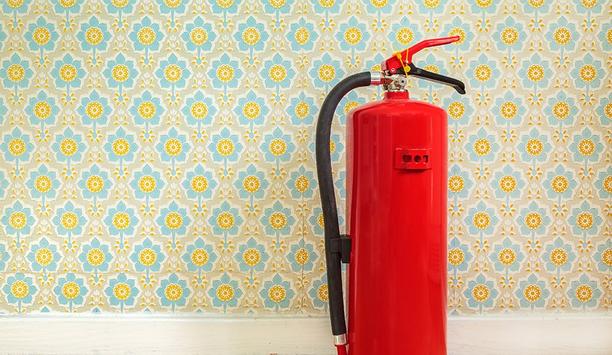
Planning An Escape During A Fire Can Save Lives
Download
The Eight Key Trends in Fire Detection in 2023
Download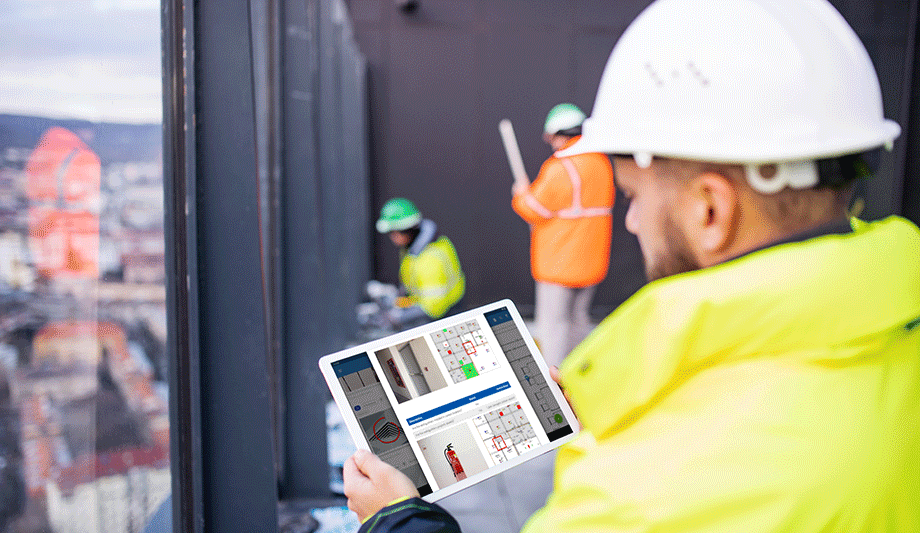
A Digital Platform to Improve Fire Safety Compliance and Inspections
Download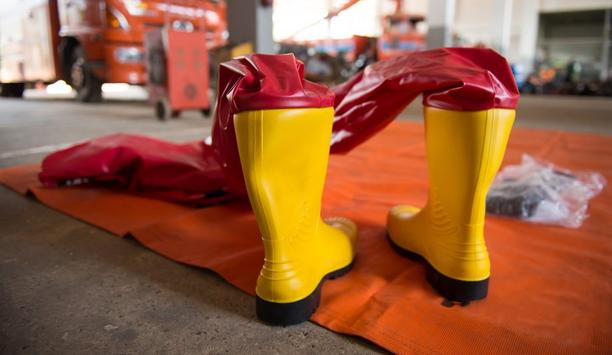
Firefighters And Asbestos Exposure
Download
Hotel And Motel Fire Safety
Download
Apartment Fire Safety Tips
Download
Fire Safety Tips For High-rise Apartments
Download
Planning An Escape During A Fire Can Save Lives
Download
The Eight Key Trends in Fire Detection in 2023
Download
A Digital Platform to Improve Fire Safety Compliance and Inspections
Download
Firefighters And Asbestos Exposure
Download
Hotel And Motel Fire Safety
Download

Videos
Building Fire Safety: Manufacturers & Suppliers
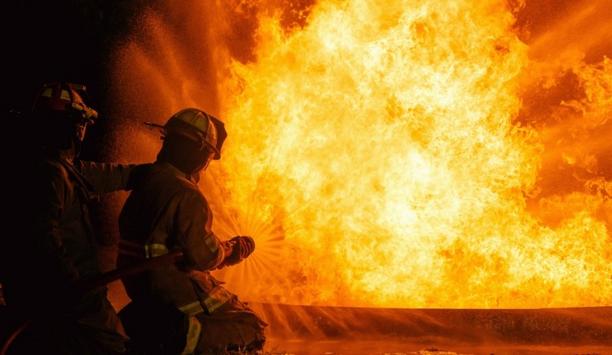
The New Future For Fire Agencies
Download
The Eight Key Trends in Fire Detection in 2023
Download
A Digital Platform to Improve Fire Safety Compliance and Inspections
Download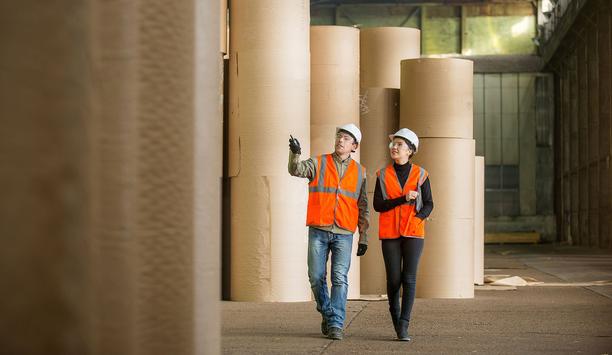
Overcoming the Challenges of Fire Safety in the Paper Industry
Download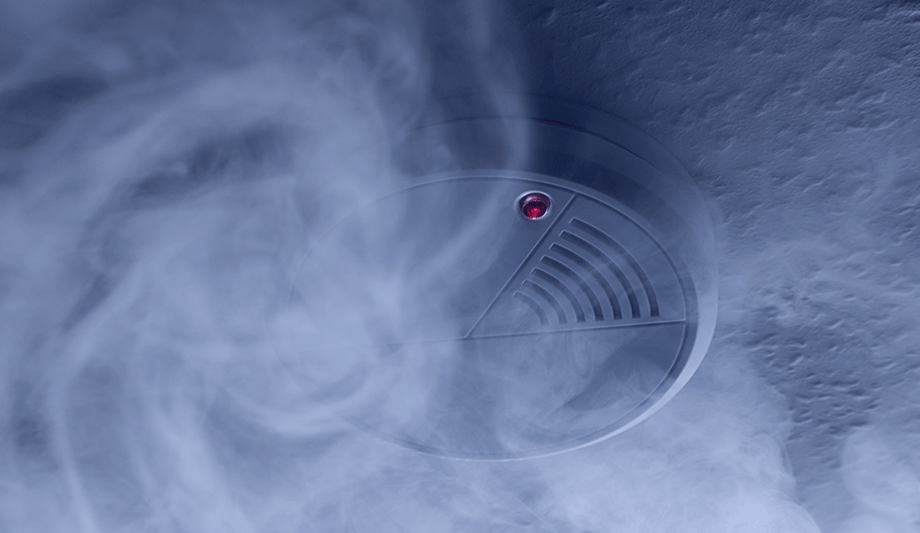
Carbon Monoxide: Creeping Killer Caught In The Act
Download







